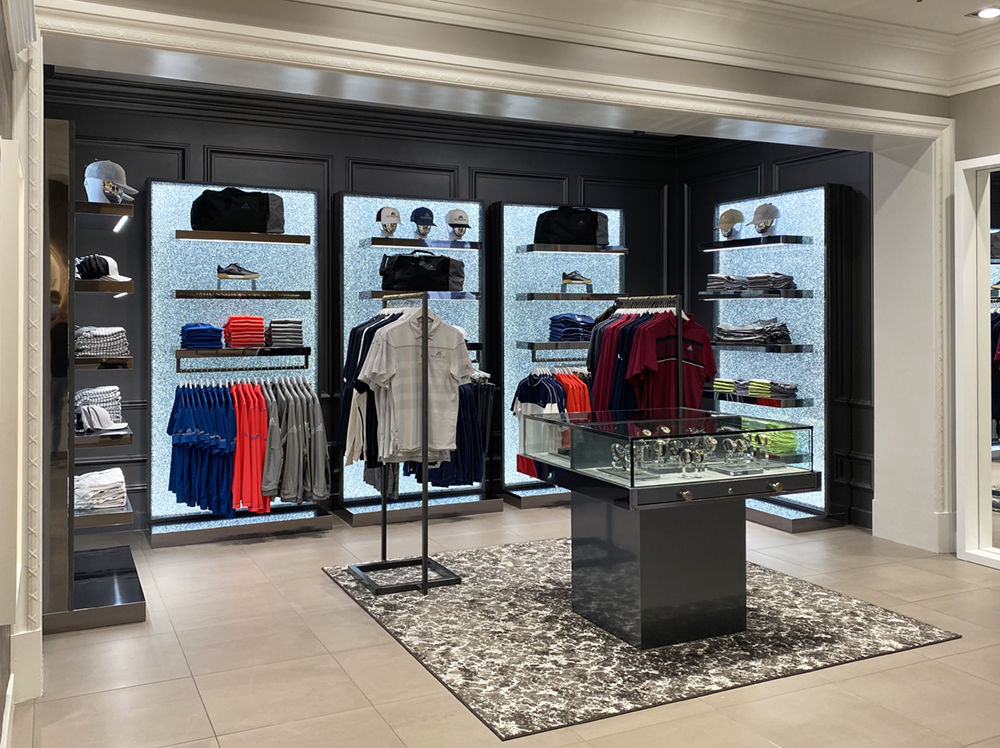In today’s retail landscape, creating an inviting and engaging shopping environment is essential for attracting and retaining customers. One of the most effective ways to do this is through shop interior design planning, which involves the thoughtful arrangement of fixtures, displays, and other design elements to create a visually appealing and functional space. From visual merchandising to planning the store layout, there are numerous elements that go into creating a successful shop interior design plan.
In this article, we’ll provide an easy guide to interior design planning for stores, with tips and insights on everything from creating a cohesive brand experience to incorporating natural elements and utilizing flexible design elements. Whether a small boutique owner or the manager of a large retail chain, these tips create a shopping environment that draws in customers and keeps them coming back for more.
Understanding the Crucial Art of Store Design
Visual merchandising is a critical element of shop interior design planning. It involves the use of design and layout techniques to create an aesthetically pleasing and engaging store environment. It involves the arrangement of products, lighting, signage, and other design elements to create a cohesive and impactful retail space.
Effective retail visual merchandising can help to increase sales and customer engagement by creating an immersive shopping experience that captures the attention of customers. By working with professionals, retailers can take advantage of the latest design trends and best practices, ultimately creating a more impactful and engaging shopping experience for customers.
Working With Professionals
Retailers can benefit from working with a visual merchandising group when it comes to creating an effective shop interior design. Many visual merchandising firms specialize in creating effective strategies and can help retailers optimize their store layout, product placement, and other design elements. By working with a Visual merchandising group, retailers can take advantage of the latest design trends and best practices, ultimately creating a more impactful and engaging shopping experience for customers.
Creating a Cohesive Color Scheme
Color plays a critical role in shop interior design, as it can impact the mood and emotions of customers. Choosing the right color scheme can create a cohesive and visually appealing shop that draws customers in and keeps them engaged. When selecting a color scheme, retailers should consider their brand identity and the emotions they want to evoke in their customers.
For instance, warm colors such as red and orange can produce a sense of urgency and enthusiasm, whereas cool colors such as blue and green promote calm and relaxation. Retailers can produce an appealing and engaging setting that leaves a lasting impact on consumers by employing the appropriate color scheme.
Optimizing Lighting
Lighting is another critical element of shop interior design planning. Proper lighting can enhance the appeal of products and create a welcoming atmosphere for customers. Retailers should consider both natural and artificial lighting sources when designing their shop interiors.
They should also experiment with different lighting techniques, such as accent lighting or directional lighting, to create a captivating environment. By optimizing lighting, retailers can create a retail space that is both functional and visually appealing.
Efficient Product Placement
Effective product placement is essential for creating an appealing space. Retailers should consider the placement of products in relation to traffic flow and create focal points to draw customers’ attention. They should also consider the use of props, signage, and other design elements to create visually engaging product displays that highlight key products and promotions.
By optimizing product placement, retailers can establish a space that is functional. Customers will be more likely to engage with products and make purchases, leading to increased sales and revenue.
Incorporating Sustainability
In recent years, there has been a growing trend toward incorporating sustainable design practices in shop interior design. Retailers can incorporate eco-friendly materials and design elements to create a more sustainable and environmentally conscious commerce space.
For example, using energy-efficient lighting and incorporating recycled materials into design elements can reduce the environmental impact of commercial space while also creating a unique and interesting atmosphere. By incorporating sustainable design practices, retailers can enhance the space in a way that is both attractive and environmentally responsible.
Other Nuances to Keep In Mind
While the above-mentioned information provides a comprehensive guide on how to navigate the interior design of the stores, there are other nuances to consider, including:
- Incorporating technology to create an interactive shopping experience
- Creating designated areas for product categories and specific product lines
- Adding natural elements like plants and greenery to create a calming atmosphere
- Designing unique and eye-catching window displays to draw in customers
- Placing sensory elements like scents and music to enhance the shopping experience
- Designing a layout that is easy to navigate for customers of all ages and abilities
- Including branding elements like logos and colors to create a cohesive brand experience
- Articulating comfortable seating areas for customers to rest and relax
- Utilizing flexible design elements that can be easily updated and changed to reflect current trends and seasons
- Embedding artwork and other elements into the environment to create a visually engaging retail environment
Collaborate with a Trusted Visual Merchandising Firm
Effective shop interior design planning is essential for creating a visually appealing and functional space. Collaborating with a visual merchandising firm can bring fresh ideas to the table while considering color schemes and lighting can impact the atmosphere of the store. Optimizing product placement is critical for driving sales and improving the overall customer experience. Sustainable design elements are increasingly important in the retail industry, and using eco-friendly materials and sustainable practices can appeal to customers who value ethical business practices. Taking a holistic approach to shop interior design planning can create a shopping environment that engages customers and drives sales. Investing in shop interior design planning improves the overall aesthetic of a store, which can lead to increased foot traffic and sales.
